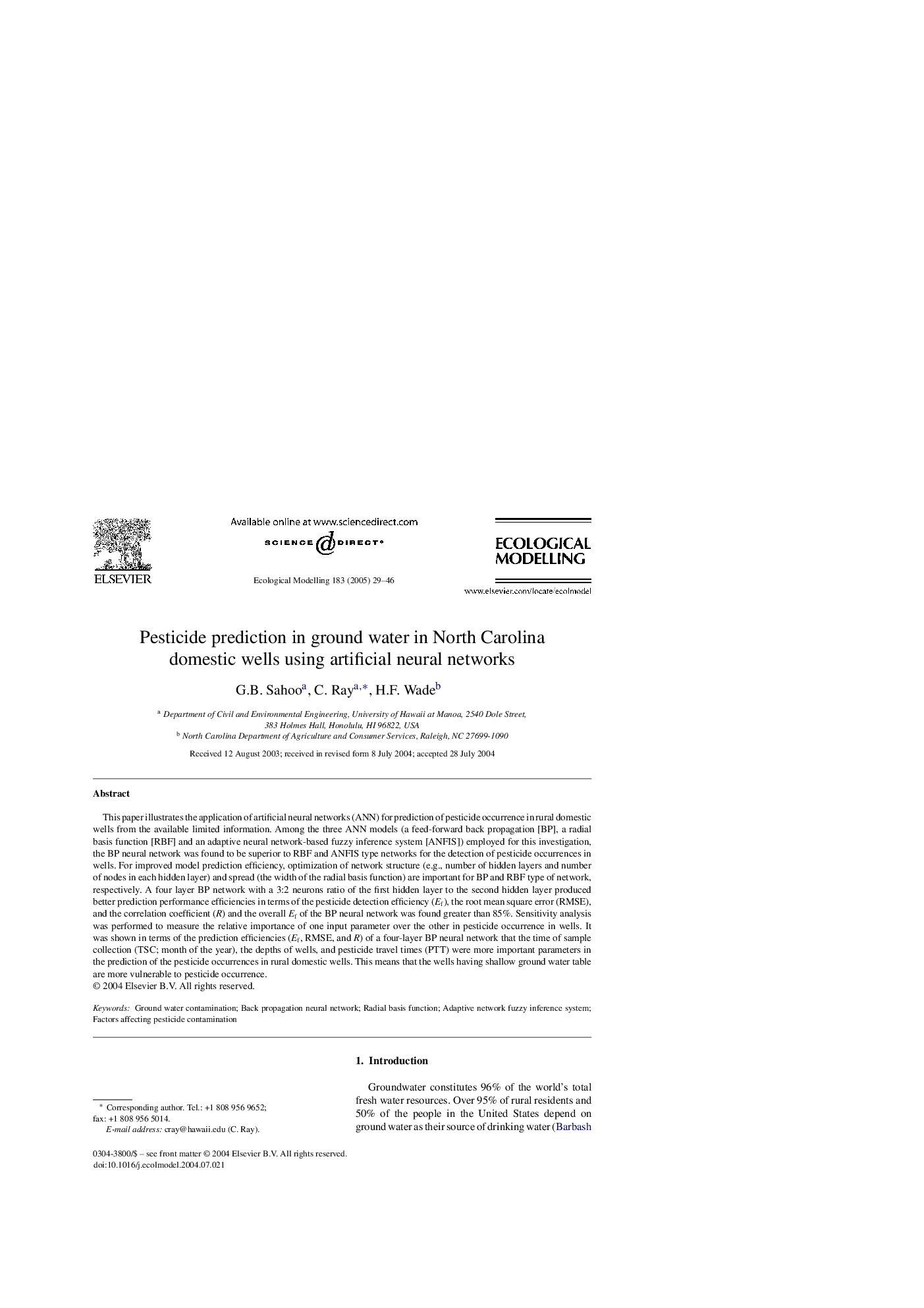| کد مقاله | کد نشریه | سال انتشار | مقاله انگلیسی | نسخه تمام متن |
|---|---|---|---|---|
| 9443576 | 1303538 | 2005 | 18 صفحه PDF | دانلود رایگان |
عنوان انگلیسی مقاله ISI
Pesticide prediction in ground water in North Carolina domestic wells using artificial neural networks
دانلود مقاله + سفارش ترجمه
دانلود مقاله ISI انگلیسی
رایگان برای ایرانیان
کلمات کلیدی
موضوعات مرتبط
علوم زیستی و بیوفناوری
علوم کشاورزی و بیولوژیک
بوم شناسی، تکامل، رفتار و سامانه شناسی
پیش نمایش صفحه اول مقاله

چکیده انگلیسی
This paper illustrates the application of artificial neural networks (ANN) for prediction of pesticide occurrence in rural domestic wells from the available limited information. Among the three ANN models (a feed-forward back propagation [BP], a radial basis function [RBF] and an adaptive neural network-based fuzzy inference system [ANFIS]) employed for this investigation, the BP neural network was found to be superior to RBF and ANFIS type networks for the detection of pesticide occurrences in wells. For improved model prediction efficiency, optimization of network structure (e.g., number of hidden layers and number of nodes in each hidden layer) and spread (the width of the radial basis function) are important for BP and RBF type of network, respectively. A four layer BP network with a 3:2 neurons ratio of the first hidden layer to the second hidden layer produced better prediction performance efficiencies in terms of the pesticide detection efficiency (Ef), the root mean square error (RMSE), and the correlation coefficient (R) and the overall Ef of the BP neural network was found greater than 85%. Sensitivity analysis was performed to measure the relative importance of one input parameter over the other in pesticide occurrence in wells. It was shown in terms of the prediction efficiencies (Ef, RMSE, and R) of a four-layer BP neural network that the time of sample collection (TSC; month of the year), the depths of wells, and pesticide travel times (PTT) were more important parameters in the prediction of the pesticide occurrences in rural domestic wells. This means that the wells having shallow ground water table are more vulnerable to pesticide occurrence.
ناشر
Database: Elsevier - ScienceDirect (ساینس دایرکت)
Journal: Ecological Modelling - Volume 183, Issue 1, 10 April 2005, Pages 29-46
Journal: Ecological Modelling - Volume 183, Issue 1, 10 April 2005, Pages 29-46
نویسندگان
G.B. Sahoo, C. Ray, H.F. Wade,